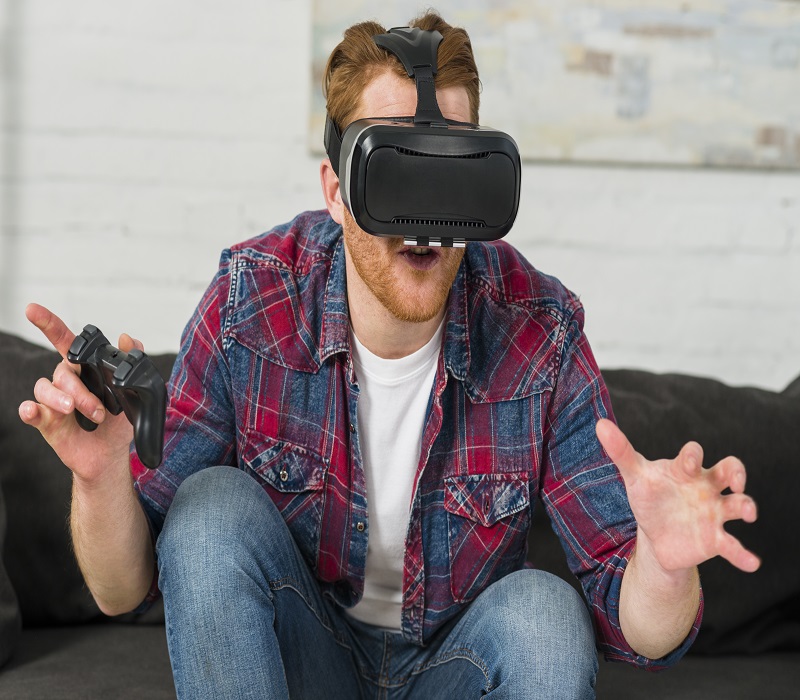Introduction
The VR industry is booming, but M100PVVR is the whispered game-changer—a portable, ultra-powerful VR/AR hybrid that could redefine immersion. Unlike mainstream headsets, M100PVVR (possibly standing for Modular 100 Portable Visual & Virtual Reality) isn’t just another iteration—it’s a leap forward in design, performance, and accessibility.
Why does this matter?
Current VR headsets like Meta Quest 3 and Apple Vision Pro still struggle with weight, battery life, and ecosystem limitations. M100PVVR, though still speculative, promises 8K resolution, featherlight ergonomics, and true cross-platform compatibility—making it a potential holy grail for professionals, gamers, and educators alike.
What Exactly is M100PVVR? (Beyond the Speculation)
While no official product exists yet, tech forums and patent leaks suggest M100PVVR is a standalone, modular VR/AR system designed for:
✅ Professionals (medical, engineering, remote work)
✅ Gamers (next-gen immersion without motion blur)
✅ Educators (interactive 3D learning)
Decoding the Name: What Does “M100PVVR” Mean?
- M100 → Likely a model/series number (possibly Modular 100)
- P → Portable (or Professional)
- VVR → Visual & Virtual Reality (hinting at AR/VR hybrid capabilities)
Unlike Oculus or HoloLens, M100PVVR seems built for seamless switching between virtual workspaces, AR overlays, and high-fidelity gaming—all untethered.
M100PVVR vs. Current VR Headsets: How It Solves Major Pain Points
| Feature | M100PVVR (Rumored) | Meta Quest 3 | Apple Vision Pro |
|---|---|---|---|
| Weight | Under 300g | 515g | 450g |
| Resolution | 8K per eye | 4K (combined) | 4K micro-OLED |
| Battery Life | 4+ hours | 2-3 hours | 2 hours |
| Tracking | 6DoF + Full Body | 6DoF | Eye + Hand |
| Price | $800-$2000 | $499 | $3,499 |
Key Advantages of M100PVVR
🔹 No More Neck Strain – At under 300g, it’s 40% lighter than competitors.
🔹 True All-Day Use – 4+ hours battery (vs. 2 hours on Apple Vision Pro).
🔹 No More “Screen Door Effect” – 8K resolution eliminates pixelation.
🔹 Works Everywhere – Windows, Android, iOS, WebXR support.
5 Real-World Uses That Could Make M100PVVR a Must-Have
1. Medical Training: Practice Surgeries in Hyper-Realistic VR
- 8K visuals + haptic gloves = risk-free surgical simulations.
- Remote diagnostics via AR overlays.
2. Education: Explore Ancient Rome or Walk Inside a Human Cell
- Students dissect virtual frogs without the mess.
- Teachers hold classes in 3D historical recreations.
3. Remote Work: The Ultimate Virtual Office
- Collaborate in 3D workspaces with life-sized holograms.
- Architects walk clients through unbuilt homes in real time.
4. Gaming: The Next Evolution of Immersion
- Play AAA games in 8K without a gaming PC.
- Full-body tracking for realistic sword fights & sports.
5. Military & Engineering: AR Overlays for Field Repairs
- Technicians see step-by-step repair guides in their vision.
- Soldiers train in hyper-realistic combat sims.
Why M100PVVR Could Fail (The Biggest Challenges)
⚠ Battery Tech Isn’t There Yet – Can it really last 4+ hours at 8K?
⚠ Price vs. Mainstream Adoption – Will it be too expensive for average users?
⚠ Content Gap – Without exclusive apps, will it just be another headset?
⚠ Privacy Concerns – Eye-tracking & biometric data could raise red flags.
What Experts Are Saying (Even Without an Official Release)
- “If M100PVVR delivers, it could make Apple Vision Pro look outdated.” – VR Today Magazine
- “The modular design could be a game-changer for enterprise VR.” – TechRadar
- “This might finally be the headset that gets my grandma into VR.” – Reddit User
Final Verdict: Should You Wait for M100PVVR?
If the rumors are true, M100PVVR could be the most versatile VR/AR device ever made. But until an official release, Meta Quest 3 remains the safe bet.
Keep an eye on this one—it might just redefine reality.
FAQs About M100PVVR
Q: Is M100PVVR confirmed by any company?
A: No official announcements yet, but leaks suggest a 2025-2026 release.
Q: Will it work with PlayStation or Xbox?
A: Unconfirmed, but Windows/Android support means possible cloud gaming.
Q: How much will it cost?
A: Estimates range from $800 (basic) to $2000 (pro edition).
Disclaimer
The information provided in this article about “M100PVVR” is based on rumors, speculative leaks, and conceptual discussions from tech forums, patents, and industry analysts. As of the publication date, no official product announcements, specifications, or release timelines have been confirmed by any manufacturer or company.




What caughtBlog comment creation my attention here is the focus on portability and cross-platform compatibility—two areas that really hold current VR back. If M100PVVR can actually deliver on lightweight design and long battery life without sacrificing performance, it could finally make VR practical beyond just gaming, especially in education and remote work. The big question is whether those specs are technically feasible or just hype at this stage.
With VR still facing issues like battery life and weight, it’s exciting to think about a headset that could potentially solve these problems. The cross-platform compatibility mentioned could also help with wider adoption in professional settings.
The idea ofBlog comment generation M100PVVR tackling current VR limitations like weight and cross-platform compatibility is fascinating, especially with its potential to merge AR and VR seamlessly. I’m curious how they plan to balance that rumored 8K resolution with battery life—those two often pull in opposite directions. If they can deliver on both, it could really shift how professionals and educators adopt immersive tech.
I’m especially excited about M100PVVR’s potential in education and remote work. Imagine being able to explore ancient history or collaborate in a virtual office with such high resolution and portability. It’s clear this could reshape how we learn and work, but it’ll be interesting to see how well it handles cross-platform compatibility and user experience in practice.
I love how the M100PVVR could potentially be a game-changer for education and medical training, offering hyper-realistic simulations for complex procedures. If the technology can live up to the hype, this could make VR far more practical and integrated into daily professional life.
What caught my attention here is how M100Blog comment creationPVVR aims to solve the pain points we still see in mainstream VR—especially battery life and cross-platform compatibility. If it really delivers on 8K resolution while staying lightweight, it could make VR practical for more than just gaming, especially in areas like remote work and training. The big question is whether the hardware can stay affordable enough to reach mass adoption.
The idea of a portable VR/AR hybrid that tackles weight, battery life, and ecosystem lock-in is really compelling. What stood out to me is the potential cross-platform compatibility—if M100PVVR can deliver that, it could finally break down some of the barriers that have kept VR adoption relatively niche. Of course, the challenge will be whether the hardware can meet those specs without sacrificing usability in real-world settings.
I love how the M100PVVR could be a game-changer for industries like education and remote work. Imagine being able to walk through historical events or use AR overlays for on-the-job training in real-time—seems like the future of learning is almost here!
I’m curious how cross-platform compatibility will work in practice. The idea of seamless integration across different systems could be a game-changer, but there are so many variables in VR ecosystems right now.